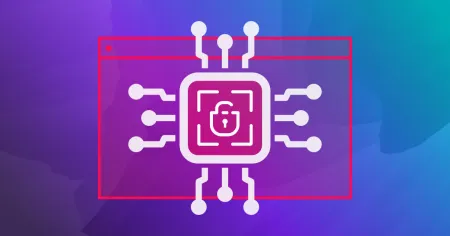Blog
Jul 16, 2024
Top Government Breaches and Threats
Explore major government breaches, common cyber threats, and how advanced cybersecurity training enhances resilience, mitigates damage, and protects critical services.
6 min read

Government institutions worldwide have become primary targets for cybercriminals. High-profile breaches have exposed sensitive information, disrupted critical services, and undermined public trust. We’ll explore the most significant government breaches, identify common cyber threats, and elaborate on how technical cybersecurity training can mitigate these threats and enhance cyber resilience.
- Office of Personnel Management (OPM) Breach (2015) – The OPM breach is one of the most notorious cyberattacks on the U.S. government. Hackers infiltrated the OPM’s systems, stealing the personal data of approximately 21.5 million federal employees. The stolen information included Social Security numbers, fingerprints, and security clearance information.
- WannaCry Ransomware Attack (2017) – Although primarily affecting the UK’s National Health Service (NHS), the WannaCry ransomware attack also impacted government institutions globally. The attack exploited vulnerabilities in Windows systems, encrypting data and demanding ransom payments in Bitcoin. It disrupted essential services and caused significant financial losses.
- SolarWinds Cyberattack (2020) – The SolarWinds attack involved the insertion of a backdoor into the Orion software update, which was subsequently distributed to numerous government agencies and corporations. This sophisticated supply chain attack led to the compromise of sensitive data and systems in multiple U.S. government departments, including the Treasury and Commerce departments.
- Phishing Attacks – Phishing remains a prevalent threat, where attackers trick individuals into revealing sensitive information or downloading malicious software. Governments often fall victim to spear-phishing, a targeted form of phishing that uses personal information to create believable attacks.
- Ransomware – Ransomware encrypts the victim’s data, demanding a ransom for the decryption key. Government agencies, holding critical and sensitive information, are lucrative targets. The consequences of ransomware attacks can be dire, disrupting essential services and compromising national security.
- Advanced Persistent Threats (APTs) APTs involve prolonged and targeted cyberattacks, typically orchestrated by nation-states. These sophisticated threats aim to steal data, monitor activities, or disrupt operations. Governments are prime targets for APTs due to the valuable information they hold.
- Supply Chain Attacks Cybercriminals target third-party vendors to gain access to government networks. The SolarWinds attack exemplifies the devastating impact of supply chain attacks, where compromising a single vendor led to widespread infiltration of government systems.
The financial and operational repercussions of cyber attacks on government institutions are profound. Breaches result in direct costs such as ransom payments, system recovery expenses, and legal fees, as well as indirect costs like loss of public trust and reputation damage. For example, the WannaCry ransomware attack caused an estimated $4 billion in financial losses globally, disrupting critical services and demanding extensive resources for recovery. The Office of Personnel Management breach resulted in an estimated $600 million in expenses related to credit monitoring services, identity theft protection, and security upgrades. The 2020 SolarWinds breach is expected to cost affected organizations, including government entities, upwards of $100 million in incident response and remediation efforts.
Operationally, cyber attacks can paralyze essential government functions, delay critical services, and compromise national security. The WannaCry ransomware attack forced the UK’s National Health Service to cancel approximately 19,000 medical appointments, including surgeries, and led to widespread operational chaos across multiple hospitals. Similarly, the Office of Personnel Management breach disrupted the normal operations of the personnel agency, as it had to focus significant resources on recovery and mitigation efforts, delaying other critical services. The SolarWinds breach compromised critical IT management software used by several U.S. government agencies, leading to significant operational disruptions as agencies worked to identify and mitigate the breach’s full extent. These operational disruptions can delay policy implementation, interfere with national security operations, and hinder the overall efficiency of government functions.
The financial and operational damage from cyber attacks can be significantly mitigated and reduced when organizations invest in a comprehensive cybersecurity skills and training platform for their teams. By equipping employees with advanced knowledge and practical skills, these training programs enhance the overall cybersecurity posture of the organization.
Well-trained teams are more adept at identifying and responding to threats swiftly, minimizing the potential damage. Timely detection and response can prevent the spread of ransomware, reducing recovery costs and operational downtime. Moreover, regular training ensures that staff are updated on the latest cyber threats and defense techniques, fostering a proactive security culture. This not only helps in preventing breaches but also ensures that the organization can quickly recover from any incidents, thereby maintaining operational continuity and protecting financial resources. Investing in cybersecurity training platforms like OffSec’s, which offer hands-on experience and simulated attack scenarios, enables organizations to build a resilient defense system, reducing the financial and operational impacts of cyber attacks.
By leveraging OffSec’s cybersecurity learning and skills development platform, which includes simulated environments, courses, Learning Paths, and labs, organizations can effectively upskill their cybersecurity teams, leading to:
- Improving Incident Response – Training programs equip government IT professionals with the skills needed to respond swiftly and effectively to cyber incidents. This includes identifying and containing breaches, mitigating damage, and restoring systems. Enhanced incident response capabilities are essential for minimizing the impact of cyberattacks.
- Strengthening Technical Skills – Advanced technical training provides staff with the knowledge to configure and manage security tools, conduct vulnerability assessments, and perform penetration testing. These skills are vital for identifying and addressing security weaknesses before they can be exploited.
- Fostering a Proactive Security Posture Proactive security measures, such as continuous monitoring and threat hunting, are essential for identifying and neutralizing threats before they cause harm. Cybersecurity training instills a proactive mindset in teams, encouraging them to anticipate and counteract emerging threats.
OffSec is renowned for its rigorous and comprehensive cybersecurity training. Our training focuses on practical, hands-on experience, which is essential for building robust cybersecurity defenses.
- Cyber Ranges – Our cyber ranges are simulated environments that mimic real-world networks and systems, allowing teams to practice responding to real-world threats in a controlled setting. By simulating actual attack scenarios, cyber ranges provide a realistic and immersive training experience, enabling participants to hone their skills in detecting, mitigating, and responding to cyber threats.
- Learning Paths: The OffSec Learning Library is continually updating with new Learning Paths, which are focused, specific blocks of training. These include Learning Paths in Security Operations, Secure Software Development, OWASP Top 10, Incident Response, Cloud Security, and Red Teaming. Structured blocks of learning ensure that teams acquire specialized skills in key areas, enhancing their ability to protect the organization against diverse cyber threats.
- Courses and Certifications – We provide a comprehensive variety of courses and certifications in security essentials, penetration testing, web application security, security operations, and exploit development, that validate the skills and knowledge of cybersecurity professionals. Our certifications are highly regarded in the industry and serve as a benchmark for technical proficiency in cybersecurity. Our intensive, practical approach ensures that learners gain real-world experience, making them exceptionally well-prepared to handle complex cyber threats.
Government institutions face a multitude of cyber threats, from phishing and ransomware to sophisticated APTs and supply chain attacks. The repercussions of these breaches are severe, affecting national security and public trust. However, through comprehensive technical cybersecurity training, governments can enhance their defenses, improve incident response, and foster a proactive security culture. By investing in training, governments can significantly mitigate cyber threats and bolster their cyber resilience, ensuring the continued protection of critical information and services.
Stay in the know: Become an OffSec Insider
Get the latest updates about resources, events & promotions from OffSec!
Latest from OffSec

Enterprise Security
How OSCP Holders Can Lead Their Teams to Greater Cybersecurity Resilience
Champion OSCP training in your organization to build a unified, resilient security team.
Apr 11, 2025
6 min read

Research & Tutorials
CVE-2024-57727: Path Traversal Vulnerability in SimpleHelp Web Application
CVE-2024-57727 lets attackers read sensitive files via path traversal in SimpleHelp. Learn more about how attackers exploit this flaw.
Apr 10, 2025
3 min read

Penetration Testing
AI Penetration Testing: How to Secure LLM Systems
Explore how AI penetration testing enhances LLM security, addressing unique vulnerabilities and improving cyber defenses.
Apr 3, 2025
8 min read